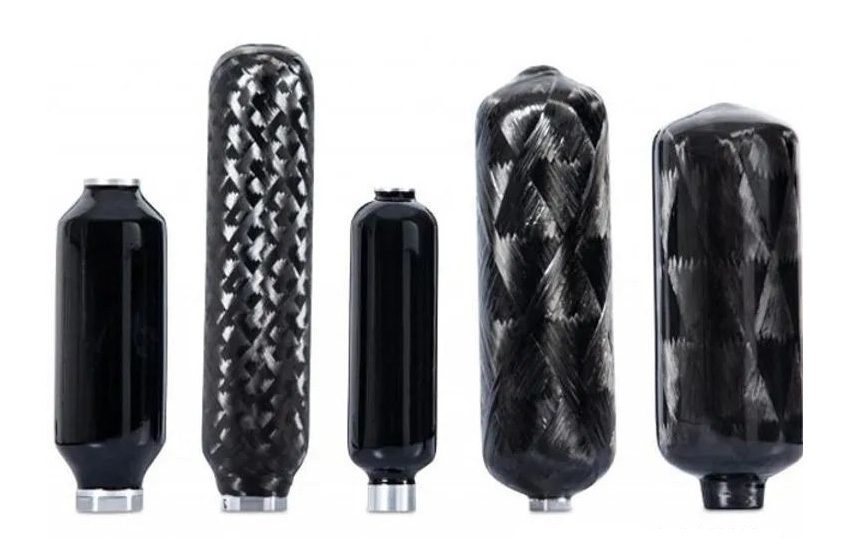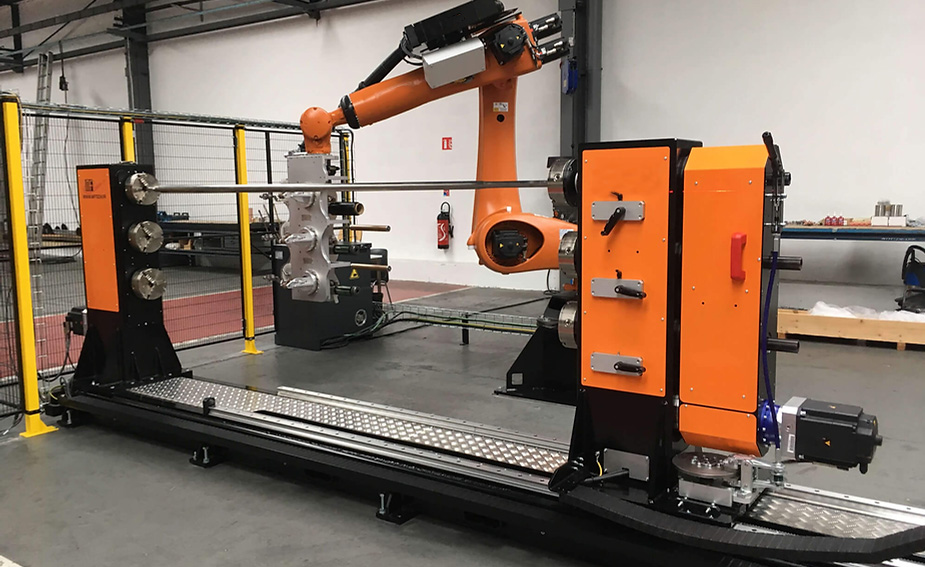Traditional Fiber Wrap
Fiber winding is a technology primarily used to manufacture hollow, round or prismatic components such as pipes and tanks. It is achieved by winding a continuous bundle of fibers onto a rotating mandrel using a special winding machine. Fiber-wound components are commonly used in the aerospace, energy and consumer goods industries.
Continuous fiber tows are fed through a fiber conveyor system into a filament winding machine where they are wound onto a mandrel in a predetermined repeating geometric pattern. The position of the tows is guided by a fiber conveyor head that is attached to a removable carrier on the filament winding machine.
Robotic Winding
The advent of industrial robotics has enabled new winding methods. In these methods, the fibers are pulled out either by translation of the fiber guide around a turning point or by rotational movement of a mandrel around multiple axes, rather than by the traditional method of rotating around only one axis.
Conventional classification of windings
- Peripheral winding: the filaments are wound around the circumference of the tool.
- Cross winding: the filaments are wound between the gaps in the tool.
- Single Axis Cross Winding
- Single-axis peripheral winding
- Multi-axis cross winding
- Multi-axis cross winding
Traditional Fiber Winding vs. Robotic Winding
Traditional fiber winding is a fairly common molding process that is limited to axisymmetric shapes such as tubes, pipes, or pressure vessels. A two-axis winder is the simplest production layout, controlling the rotation of the mandrel and the lateral movement of the conveyor, so it can only produce reinforced tubes and pipes. In addition, the conventional four-axis machine is a general-purpose winder that is also capable of producing pressure vessels.
Robotic winding is mainly used for advanced applications and is well matched to tape winding, resulting in higher quality parts. In this technology, it is also possible to automate auxiliary operations that were previously performed manually, such as placing mandrels, tying and cutting threads, and loading wet yarn-covered mandrels into the oven.
Adoption Trends
The use of robotic winding for manufacturing composite cans continues to show promise. A unifying trend is the adoption of automated and integrated industrial cells and production lines for the construction of composite cans, thus providing a complete turnkey solution in manufacturing. Another technological breakthrough may represent entanglement hybridization with other processes, such as continuous fiber 3D printing and automated fiber placement, which add fibers where they are needed quickly, accurately and with virtually zero waste.
Post time: Oct-25-2024







